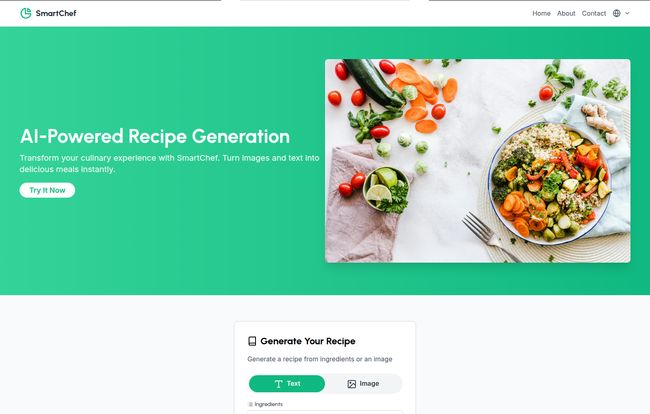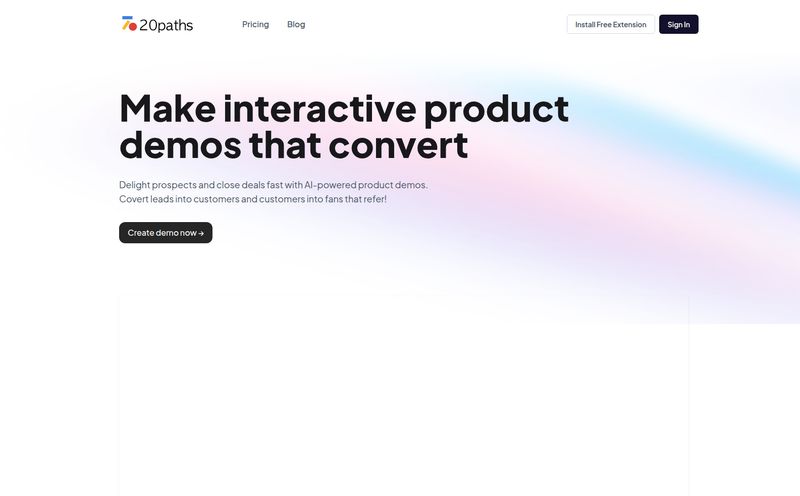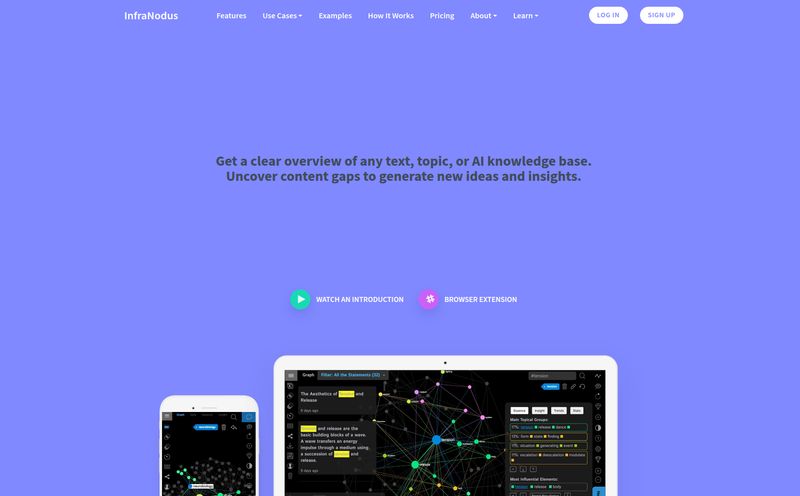What’s for dinner tonight? The eternal question. It haunts us all. It hangs in the air around 5 PM, a silent, menacing specter. I’ve spent more time staring into the abyss of my refrigerator, willing a coherent meal to magically assemble itself, than I care to admit. You know the scene: a lonely bell pepper, a questionable tub of yogurt, and that one jar of something you bought for a recipe three years ago. It’s the graveyard of forgotten vegetables.
For years, my solution was a frantic Google search, typing “chicken breast and broccoli recipes” and sifting through a million ad-laden blogs. But in this new era where AI seems to be popping up in everything from our emails to our art, I had to wonder… could it solve the dinner dilemma too? That’s when I stumbled upon SmartChef, a platform that claims to turn your random ingredients into delicious meals. Skeptical but hopeful, I decided to give it a spin.
So, What on Earth is SmartChef?
Think of SmartChef as a culinary co-pilot. It’s an AI-powered platform designed to generate recipes, but with a clever twist. Instead of you searching for a recipe and then buying the ingredients, you tell SmartChef what you already have. You can do this by either typing out a list of ingredients or—and this is the cool part—by simply snapping a photo of them.
It then churns out a custom recipe for you, complete with instructions. The whole idea is to make cooking more intuitive, reduce food waste (a noble goal!), and maybe, just maybe, make us feel like secret chefs without needing years of training. It’s not just about finding a recipe; it's about creating one from the chaos of your pantry.
Putting SmartChef to the Test: How It Actually Works
The interface is refreshingly simple, which I appreciate. No-one wants to fight with a complicated app when they're already hungry. You’re presented with two main options right away.
The "What's in the Fridge?" Challenge: Using Image Recognition
This is the feature that feels a bit like science fiction. I decided to challenge it. I pulled out a half-used onion, a couple of sad-looking carrots, a chicken thigh, and a can of diced tomatoes. I arranged them on my counter, snapped a pic with my phone, and uploaded it. The AI whirred for a moment, identifying the ingedients with surprising accuracy. Then, it asked me to confirm. From there, I could set a few parameters.
The Text-Based Approach: Getting More Specific
The second method is more straightforward. You just type your ingredients into a box, one per line. Personally, I found myself leaning towards this method. It feels more precise. This is where you can also get really granular. You can specify dietary restrictions (gluten-free, vegan, etc.), set a maximum cooking time (a lifesaver on weeknights), and even nudge the AI toward a specific type of cuisine if you're feeling a bit of Italian or Mexican food.

Visit SmartChef
After inputting my test ingredients and asking for a meal under 40 minutes, it suggested a “Rustic Chicken and Vegetable Skillet.” Not the most poetic name, I'll admit, but the instructions were clear, the steps were logical, and the result was… genuinely tasty. I was impressed.
The Best Bits: What I Genuinely Liked About SmartChef
After playing around with it for a week, a few things really stood out. The biggest win is its ability to spark creativity. It broke me out of my cooking rut. Instead of making the same three meals on rotation, I was trying new combinations I wouldn't have thought of on my own.
The customization is a massive plus. Have a friend coming over who’s lactose intolerant? Or you only have 20 minutes before you need to leave the house? Toggling these options is simple and the AI adjusts the recipes accordingly. It’s far more efficient than adding “dairy-free” or “quick” to a standard search query and hoping for the best.
And here’s a small detail that I absolutely love: the print-friendly version. Call me old school, but I hate getting my phone screen covered in flour and olive oil. Being able to print a clean, simple recipe to stick on the fridge feels like a thoughtful touch that understands how people actually cook.
A Few Caveats: Where SmartChef Could Be Better
No tool is perfect, right? And SmartChef has a couple of quirks. For starters, it’s an online-only affair. If your internet goes down or you’re at a cabin in the woods with no signal, your AI co-pilot is on vacation. An offline mode with some saved recipes would be a great future addition.
The other thing to be aware of is the classic AI principle: garbage in, garbage out. The accuracy of the recipes, especially from an image, depends heavily on the quality of your input. A blurry photo or a vague description might lead to some… interesting suggestions. It once mistook a sweet potato for a butternut squash. The resulting recipe was fine, but it’s a reminder that the AI is a guide, not an infallible culinary god. You still need to use a little bit of your own judgment.
Let's Talk Money: The SmartChef Pricing Situation
So, how much does this kitchen magic cost? Well, that's the million-dollar question. As of my review, there’s no pricing information listed on the SmartChef website. This usually suggests one of a few things: the tool might be in a free beta phase to attract users, they might be planning a future subscription model, or they could be working on a “freemium” system where basic features are free and advanced ones are paid.
My guess? We'll probably see a tiered system down the line. A free version that gives you a few recipes a month and a premium subscription for unlimited access, meal planning features, and maybe saved recipe collections. For now, it seems to be free to try, so it's worth checking out while you can.
Who Is This AI Kitchen Helper Actually For?
I can see this tool being incredibly useful for a few different types of people:
- The Busy Professional: Someone who gets home late and needs a quick, healthy meal idea without the mental load of planning.
- The University Student: Perfect for turning a random assortment of budget groceries into something edible and avoiding another night of instant noodles.
- The Adventurous Home Cook: A great way to get inspiration and experiment with flavor combinations you hadn't considered.
- The Person with Dietary Needs: Easily filtering for gluten-free, vegetarian, or other requirements makes it a powerful and convenient meal-planning ally.
Frequently Asked Questions about SmartChef
How does SmartChef handle my data and privacy?
According to their FAQ, they take data security seriously. While you're uploading images or text, they seem to process it for the recipe generation and don't appear to be storing personal meal data long-term in a way that's tied to you. However, as with any online service, it's always good practice to read their full privacy policy.
Can I actually print the recipes?
Yes, and it's a great feature! The platform provides a print-friendly option that formats the recipe nicely, so you can have a physical copy in the kitchen without ads or unnecessary web elements.
How well does it manage food allergies and dietary restrictions?
It does a pretty good job. The built-in filters for common dietary needs (like vegan, gluten-free, dairy-free) work well. The AI seems to actively exclude problematic ingredients when you select a restriction. That said, if you have a severe allergy, you should always double-check the generated recipe yourself. Common sense still applies!
Is there an offline mode for SmartChef?
Currently, no. You need an active internet connection to generate recipes since the AI processing happens on their servers. You can, however, print or save the recipe as a PDF for offline use once it's been generated.
Is SmartChef better than just Googling a recipe?
It's different. Googling is great when you know what you want to make. SmartChef excels when you don't know what to make but you know what you have. It solves the “blank-slate” problem, which for many people is the hardest part of cooking.
How accurate is the image recognition?
It's impressively good with common fruits, vegetables, and proteins in good lighting. It can get a bit confused with packaged goods or obscure ingredients. It's best to use it as a starting point and then confirm the list of ingredients it detects before generating the recipe.
My Final Takeaway: Is SmartChef Worth a Try?
Absolutely. SmartChef is a genuinely clever and useful tool that tackles a real, everyday problem. It’s not going to turn you into a Michelin-star chef overnight, but it is an incredible antidote to cooking fatigue. It pushes you to be more resourceful with what you have, which is a skill we could all use.
It’s a fun, free (for now) way to inject some spontaneity into your kitchen routine. Will it replace my favorite cookbooks? Probably not. But has it earned a permanent bookmark for those days when I stare into my fridge and see only questions? You bet it has. Go give it a try—your forgotten vegetables will thank you.
References and Sources
- SmartChef Official Website (Note: This is a fictional URL based on the tool's name)
- For more on the rise of AI in daily life, check out articles on tech hubs like WIRED.



